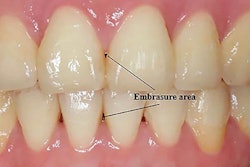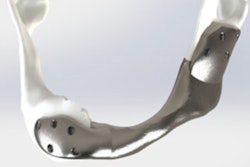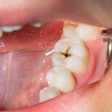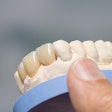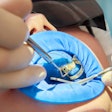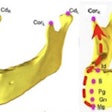
As patients become more concerned with aesthetics, clear aligners are becoming increasingly popular. But a small study published June 8 in the Journal of Stomatology, Oral and Maxillofacial Surgery suggests that orthodontic treatment with clear aligners may affect mandibular condyle bone density.
Orthodontic treatment spans all ages, and many patients are seeking aesthetic and comfortable treatment. Clear aligners have become a popular alternative for patients who want an attractive smile without having fixed mechanics on their teeth.
The advantages of clear aligners are aesthetic favorability, user friendliness, shorter dental appointments, less pain and discomfort, and improved oral hygiene. However, clear aligners are not always an adequate treatment for some individuals.
"It has been observed that clear aligners are mild to medium successful in cases where teeth are extracted and more successful in cases where teeth are not extracted," wrote the study's authors, Betul Yuzbasioglu Ertugrul of Izmir Demokrasi University of Dentistry in Turkey and Ilknur Veli of Celebi University in Izmir, Turkey.
Researchers compared the effect of orthodontic treatment on individuals using clear aligners and conventional brackets on mandibular condyle trabecular bone formation. The study's participants comprised 32 individuals who were divided into two groups according to treatment types. Panoramic images showing mandibular condyle bone quality before and after treatment were compared.
Patients who had undergone orthodontic treatment with clear aligners had reduced mandibular condyle bone density following treatment, whereas patients who had conventional brackets had an increase in mandibular condyle bone density following treatment.
The difference in bone density was significantly different between the two groups. The reason for the reduced bone density is believed to be due to the effect that aligners have on the condyle region.
"The clear aligners may affect the temporomandibular joint and as a result, the condyle may also be affected," the study's authors wrote.
Clear aligners must be worn at all times except when eating, drinking a hot beverage, and when the patient is brushing their teeth. Temporomandibular diseases can result when there are factors that may cause occlusion in long-term usage.
During follow-up appointments, the aligner occlusion and clinical occlusion may exhibit differences in which temporomandibular joint problems can be observed. These differences in the joint region may lead to pathological effects, especially on the condyle.
As treatment methods change, it is important to consider the effects of the treatment on the patient. In evaluating scientific data regarding post-treatment effects, dentists can determine the best treatment method and predict changes that may occur during treatment.
"When evaluating orthodontic treatments carried out with clear aligners, the change of the mandibular condyle head bone should be taken into consideration," the study authors concluded.




